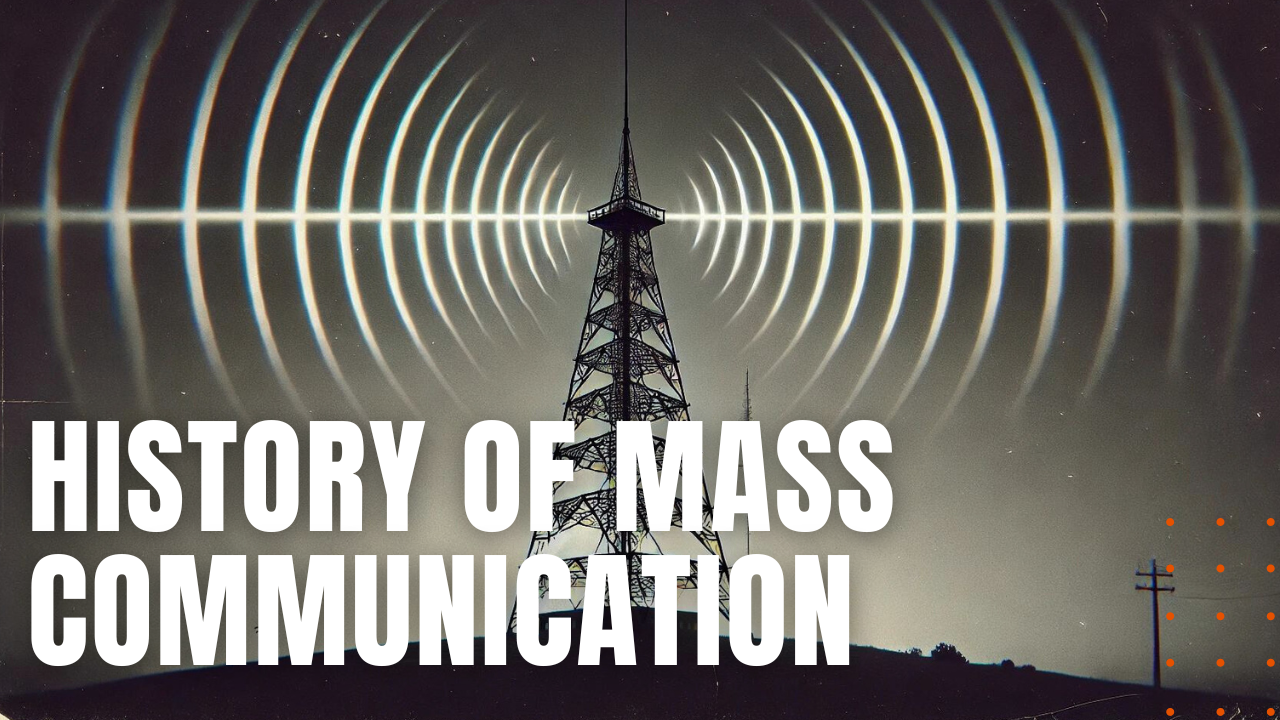History of Mass Communication

Before the discovery of electricity, the first documented mass communication technique took place in 1200 BC during the Trojan War, when fire signals were used at the siege of Troy. In 776 BC, carrier pigeons were used to announce the Olympian winner to the residents of Athens, while in 200 BC, Egypt and China employed runners and horsemen to carry messages between a network of relay stations. Signal mirrors came into use by 37 AD, while Gutenberg’s invention of the printing press in 1448 transformed the dissemination of knowledge, literacy and thought.
Telescripes to Telegraph
After the wide adoption of telescopes in 1608, which allowed mariners to communicate with signal flags, semaphore towers became common by the 1800s, and while Joseph Henry invented the first electric telegraph in 1835, Samuel Morse used his new code to send a message between Washington DC and Baltimore in 1844. A little more than a decade later, the first transatlantic telegraph service allowed direct communication between North America and Europe. Italian inventor Guglielmo Marconi advanced the age of telegraphy in 1897, when he sent the first wireless communication across England’s Bristol Channel, which birthed the popularity of radios by the 1920s and beyond, until the television became the new king of home entertainment from the 1960s until now. After Alexander Graham Bell’s 1915 telephone call from New York to San Francisco, the telephone age was to follow, when at first families and businesses used party lines and switchboard operators to communicate with friends, family and business associates. While Almon Strowger invented the direct dial telephone in 1889, the technology failed to go mainstream until November 10th, 1951, when a three-digit area code saw the first direct dial phone call between New Jersey and California. Developed in the 1950s for medical applications, pagers became the rage by the 1980s through the early 2000s.
Satellites to Cellular
Once satellite communication and cellular technologies found their stride in the 1970s and 80s, cell phones became a growing obsession for those rich enough to afford both the equipment and expensive calling plans. Growing ever smaller thanks to advances in computing and technology, the first flip phone emerged in 1989, followed by the introduction of Blackberry cell phones and Palm Pilots in the early 2000s. After Ray Tomlinson sent the first email in 1971, the World Wide Web was born in 1989, sending mass communication into an ever-accelerating spiral of social media addiction and information overload. Today, following the advent of artificial intelligence or AI, mass communication has entered a new era that many futurists predict will supersede the impact of Gutenberg’s printing press, making the history of mass communication, a study in man’s limitless desire to be heard.
